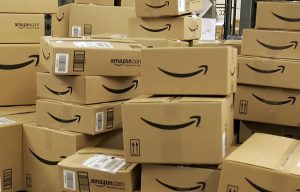As you know when I touched upon it a few weeks ago, OmniChannel fulfillment is all the rage for all retailers. There are still retailers who still using the “old” model where a distribution center is fulfilling all the orders. Then there are retailers like Wal-Mart with a hybrid where they are expanding their e-commerce and using a mix of distribution centers and store fulfillment.
As part of the project, Wal-Mart, the world’s biggest retailer, will shift more inventory to eight massive e-commerce warehouses around the U.S., the last of which will be built by year’s end. It is part of a $2 billion investment the company is making in technology and logistics to boost e-commerce sales.
Wal-Mart is looking at expanding their distribution centers for all of the ecommerce, this is great! Generally, we can expect better packed packages when it comes from a distribution center.
In a separate WSJ article, they discuss the costs of OmniChannel
Many large retailers, including Macy’s Inc. and Target Corp., fill some online orders from brick-and-mortar stores, but the process can be inefficient. When an e-commerce order comes in, designated “pickers” pull items off shelves to box up and send to online shoppers. Whenever a human touches an item, costs are added to the transaction.

FILE – This Dec. 13, 2005 file photo shows stacks of Amazon.com boxes with merchandise for shipment, at the Amazon.com fulfillment center in Fernley, Nevada. Amazon.com Inc. has signed a deal Monday, Sept. 26, 2011, to stream Fox movies and TV shows to members of its Amazon Prime premium shipping program. (AP Photo/Ben Margot, File)
What You Need To Know
You need to know your retailers that you source in their distribution model. Why is that? Because if you have store fulfillment orders for goods that expire, you will likely receive products that you might not be able to sell.
A product that has an expiration date may be listed with FBA as long as the unit is lot-controlled and the remaining shelf life is greater than 105 days from the time of receipt by Amazon.
- Units that are within 50 days of the expiration date will be removed for disposal by Amazon.
- Units subject to disposal will not be available for return.
- Some products would need to be received earlier than 105 days. For example: a daily supplement that had 240 tablets, the remaining shelf life would be 240 days or greater, however the same supplement with only 180 tablets would have a remaining shelf life of 180 days or greater.
As you can see straight from Amazon, products need a shelf life of more than 105 days when they receive the product. If we use May 1 as our date then Amazon will only take products 8/14/2016 and later. If the expiration date is 7/30/2016 Amazon will not take the product. When stores use store fulfillment and their associates do not stock the shelves properly using the first in first out method, there is a good chance that you will receive product that you can’t send into Amazon.
If you know your retailer uses the distribution center model for all online orders, you can rest assured that you will receive the freshest products from the distribution center.